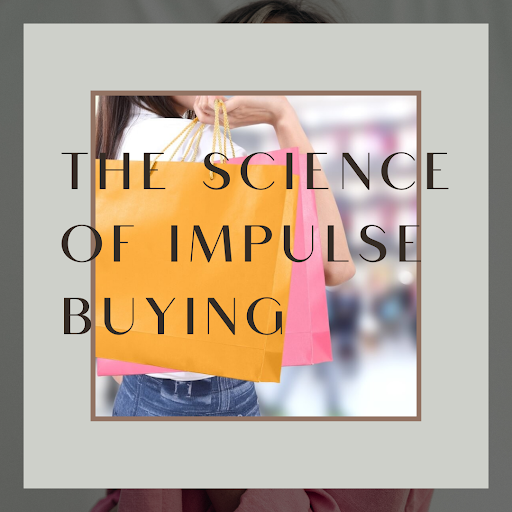How Retailers Can Turn Impulse Buying Into A Win-Win For Both The Customer And Themselves!
Click on image to download high resolution version
Turn Impulse Buying Into A Win-Win situation
What is impulse buying?
Impulse buying is when a customer spontaneously buys something. It often happens when a product (for example, a pair of shoes in the window) catches the customer’s eye and the customer can’t stop thinking about it. Impulse buying is great for retailers because it often leads to sales.
Think of impulse buying as love at first sight. You can't help but get caught up in the moment, and it's hard to stop. However, impulse buying can sometimes be bad for the retailers because it leads people to buy things they don’t need or may not even want. Just like love at first sight, they might find out the product isn’t a good match for them once they bring it home. As a result, the store is stuck with returns which take time and resources away from other things in the business that could generate sales.
What Causes Impulse Buying?
Impulse buying can happen for a variety of reasons. Sometimes, it’s just because customers are being drawn in by the attractive price or appealing packaging. Other times, customers might be feeling rushed and distracted, so they grab an item off the shelf without taking the time to evaluate whether they really need it.
Many people are frustrated or simply bored by the experience of waiting in line, and this is where many impulse buys occur. They may also have difficulty keeping track of all the items they need to buy because they are distracted by lots of signage and displays.
This type of distraction can lead to high-risk behaviors for both the customer and the seller. In a worst case scenario, impulse buying can even hurt the brand image of your store. If the customer gets home and has buyer’s remorse, this can make them feel cheated by the retailer as if they bought into a sales gimmick. What’s more, if they decide to return the product, this hurts your overall sales goals.
Can impulse buying be beneficial to retailers?
Impulse buyers tend to be risk takers who are willing to spend money on things they don’t need, and in most cases, it works very well for the retailers.
For retailers, impulse buying could mean attracting a new customer by offering an attractive sale or promotion with few limitations. New customers will be willing to shop just for the thrill of the hunt. Impulse buying is also beneficial for retailers because it increases key performance indicators such as average order value and units per transaction.
Every time consumers go into a store and walk out with a new item, they have increased the retailer’s sales. When a retailer is able to present the right assortment of products at the just the right price, impulse buys will actually add value to the customers overall experience.
For instance, a boutique that specializes in cocktail attire might want to offer a selection of shapewear on a rack in the dressing room for customers to try on with the dresses. This is not necessarily an item that people want to overpay for, and they also don’t want a pushy sales pitch about it.
By offering a value based product and being strategic about the display inside the fitting room area, the store can easily pick up additional sales on the shapewear that the customer wasn’t planning to buy. Even if they decide not to purchase the shapewear, they will appreciate the option of being able to try it on with the dress. In the end, it’s a win-win for the store.
Is there any good for customers in impulse buying?
Undoubtedly, impulse buying is one of the most common ways that consumers make purchases. There are many benefits to impulse buying, including saving time and money. By impulse buying, consumers avoid the need to research prices and find other places to buy products. Shoppers are more savvy than ever and they know where to go to find the best buys on quality products. When retailers are able to offer the perfect blend of convenience, quality, and price, customers will be more loyal and visit your store more frequently for the thrill of the hunt!
Why retailers should look at impulse buying as a win-win for everyone:
It turns out that a lot of people are buying things impulsively, and most of those people are doing it without realizing it. This is because these people are making impulsive decisions based on emotion instead of logic.
When done right, a win-win scenario can be created between the retailer and shopper. Retailers benefit from increased sales, while shoppers reap the rewards of buying something they want and need. The key is to go beyond the impulse gimmicks. Retailers should focus on getting customers to try new things and make them feel good about themselves for doing so.
At the end of the day, we all want customers to be happy and satisfied with the purchases they make so that they are less likely to return items and more likely to shop again.
Conclusion
On the surface, impulse buying seems like a potentially bad thing, or one retails evils. Promotion gimmicks can give the impression that you’re in a store where all they care about is how much you’re spending rather than the experience of shopping for great stuff.
However, as we’ve shown, retailers have the power to redirect the natural human behavior of impulse in a way that ultimately benefits customers, adds value to their life, and helps the business grow at the same time.

